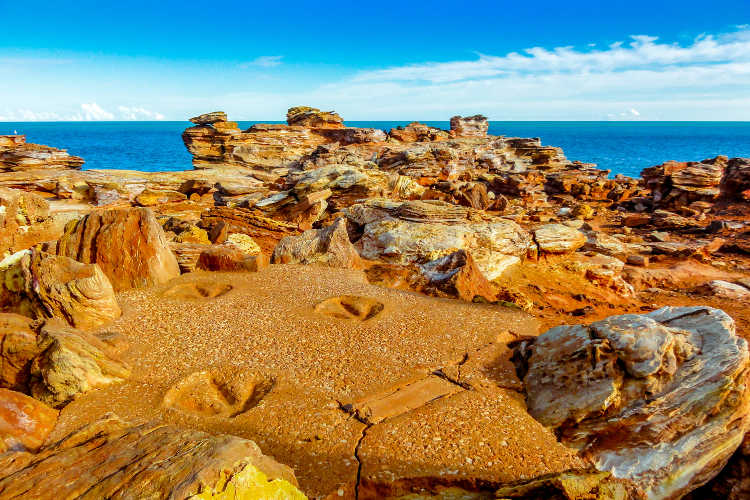
Dinosaurs roamed the land over one million years ago; their legacy are the footprints straight from the movie set of Jurassic Park. To see these extraordinary markings, head to Gantheaume Point at (extra) low tide. They’re not easy to spot but are worth the effort (and sure beat the plaster-cast replicas at the entrance to the point). Indigenous peoples are believed to have settled in the region around 40,000 years ago; their route is still debated. Today Broome is home to the Yarawu people.
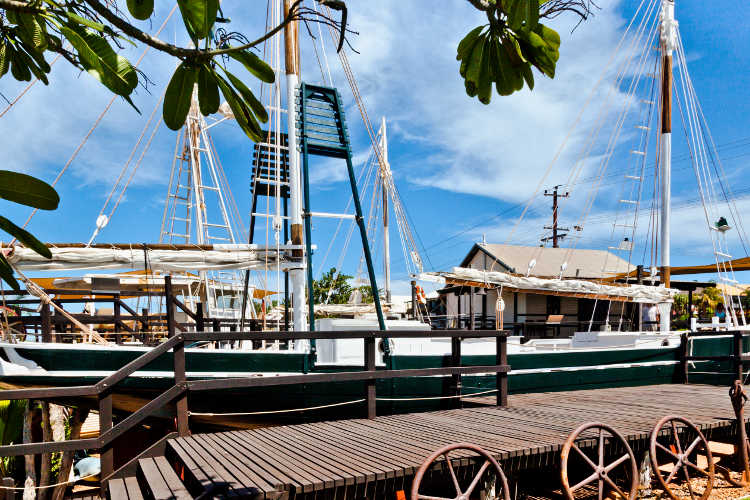
Indigenous peoples had been harvesting and trading pearl shell in the region for thousands of years. Broome itself was formed around a shell. Discovered by seekers of Pinctada maxima (the largest pearl oyster), Roebuck Bay – on which Broome is situated – became a boat-sheltering ground and then a pearling port, albeit a primitive one. To get a sense of the past, wander over to the mangrove swamps north of Town Beach. With a bit of imagination you can easily picture the shoreline as it once was: sandhills covered in pearlers’ tents, and luggers (pearling boats) anchored beyond.
Thanks to cheap (or, in the early years, slave) labour, the pearling industry soon boomed. Workers from Japan, Malaysia, Singapore and Timor laboured on luggers for weeks at a time, usually under horrendous conditions and according to a strict class hierarchy. In the early days of diving, before the introduction of diving apparatus, Indigenous workers were coerced into the industry. The bronze statue in Pioneer Park poignantly commemorates the female Aboriginal divers who, having become pregnant on the luggers, were still forced to dive. It depicts a female diver gasping for air as she proffers up a pearl shell, a small belly protruding above the waves.
Later, with the introduction of vulcanised suits and massive helmets, Broome became the world’s largest pearling centre. Pearl masters – British ‘gentlemen’ – sported white uniforms and pith helmets (it’s said that they sent their uniforms to Singapore to be laundered and carried several changes with them each day).
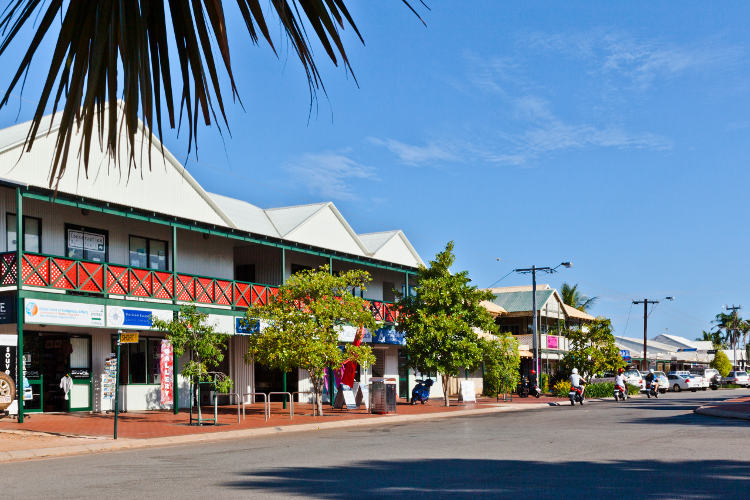
By this time, the outpost (still unnamed) was morphing into a bustling hub of pearling sheds, noodle-soup stalls, hawkers, gambling dens and brothels. Today several of the old buildings survive in Chinatown – the area between Carnarvon and Short Sts. To evoke the streets of yesteryear, swing by the Roebuck Hotel (aka ‘The Roey’), Short Street Gallery (formerly Hanoe’s Cottage, 38 Short St), and the stunning Streeter & Male offices (2-6 Short St) distinguished by their galvanised iron, angled roofs and verandas. On Dampier Terrace, stroll along the small Streeters Jetty, the original jetty for the pearling luggers in the 1880s. In the same street, don’t miss the Pearl Luggers Museum (pearlluggers.com.au), which gives an evocative account of the divers’ lives and displays rigged pearling luggers.
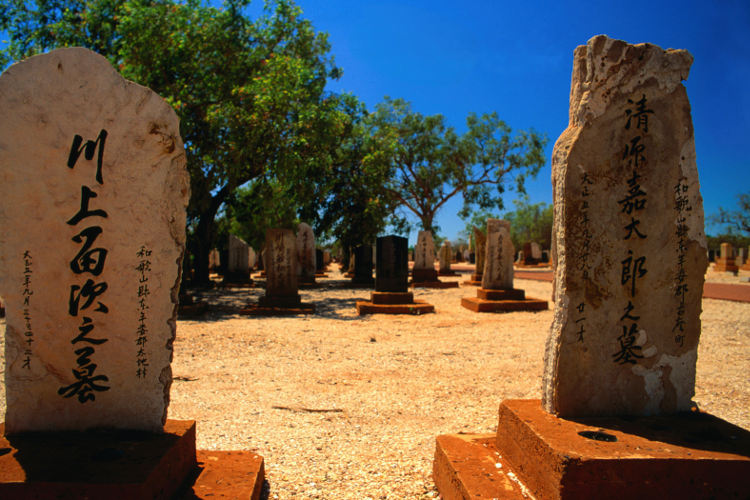
One of Broome’s more moving sites, the Japanese Cemetery features over 900 engraved gravestones commemorating the divers who lost their lives, most while diving and usually to the ‘bends’. As boats returned home, women and children waited on shore dreading a half-mast flag (to indicate a death on board). Those who survived could make their life’s fortune in several years.
Due to WWI and the introduction of plastics, the pearl industry collapsed; the impact on Broome was devastating. Prominent families left, never to return. Also in the first half of the 20th century, cyclones often flattened the town. But despite the challenges, in the 1920s and ’30s Broome’s pearling industry was on the rise again.
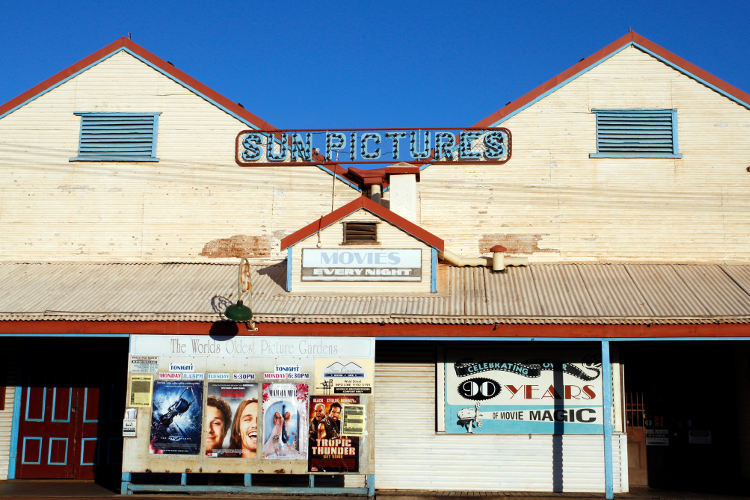
To add a bit of spice to Broome’s social life, in 1916 pearling master Ted Hunter opened Sun Pictures, today the oldest functioning open-air cinema in the world. Sports clubs, schools and hospitals cropped up, too, usually run separately by the different nationalities. These days, you can still grab a popcorn at the cinema and kick back in a deck chair. (Warning: hold onto your hair – planes pass overhead.) Stay to listen to the 15-minute recording about the shenanigans of yesteryear, from dogfights and ‘illicit’ cuddling to who was permitted to sit where according to their race and status.
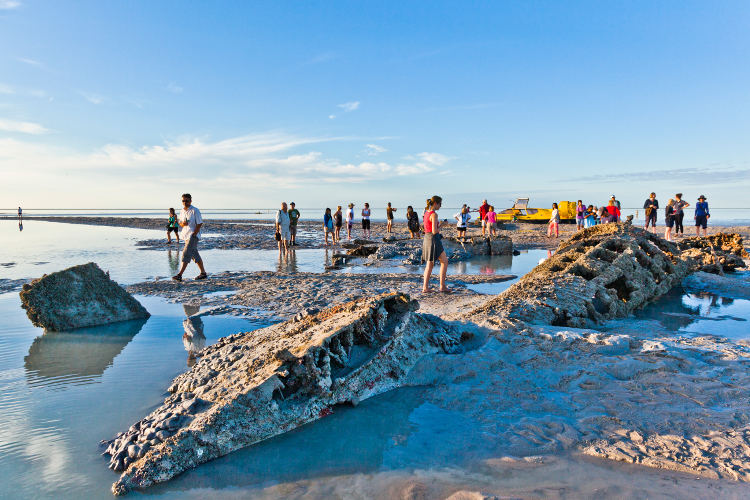
WWII brought further destruction to the town. Broome, considered a safe haven, became the transit point for Dutch refugees after the fall of Dutch Java. However, the town was exposed and unprepared for combat. On 3 March 1942 Broome entered the war when Japanese aircraft strafed 15 flying boats carrying refugees. At the outbreak of the war Broome’s Japanese residents, many of whom had been born in Australia, were interned. Nowadays, at low tides, you can walk 1km to the wrecks of the flying boats. In the 1950s the pearling industry was given a massive boost but this time, it was not the shells that were valued – thanks to the development of artificial pearl cultivation technology, cultured pearls were all the rage.
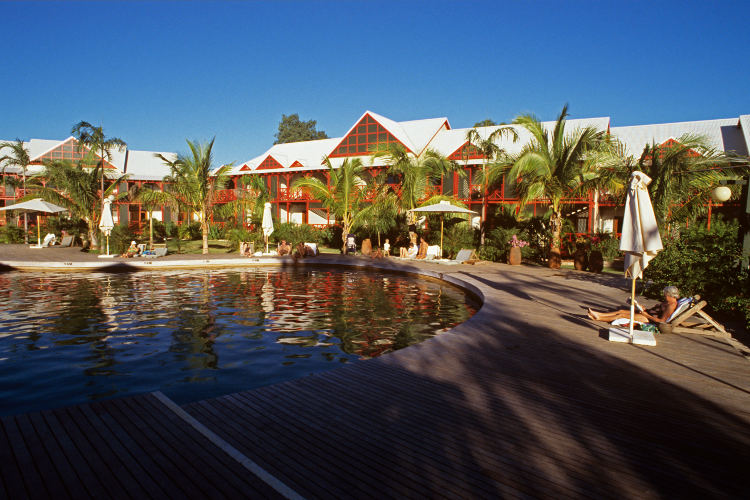
The spectacular Cable Beach, 6km north of Broome, may be associated with camels and its long sandy arc (a visit at sunset is a must), but in fact it was named after a telegraph cable which linked the colony with England. The cable ended at the Cable House, now the Courthouse. This stunning building, with corrugated-iron roof and teak floors, epitomises the local Broome architecture. Today, an arts and craft market is held every weekend in its gardens.
In the 1980s, eccentric Englishman Lord McAlpine fell in love with Broome (at that time also a base for gas and mining exploits) and its tourism potential. He constructed the famous Cable Beach Club Resort & Spa and rehabilitated many buildings, including the beautiful McAlpine House, formerly the pearling master’s cottage and now a hotel. He even – controversially – replanted the town’s baobab trees from locations outside Broome. But it worked: for better or worse, Broome had become a dot on the tourist map.
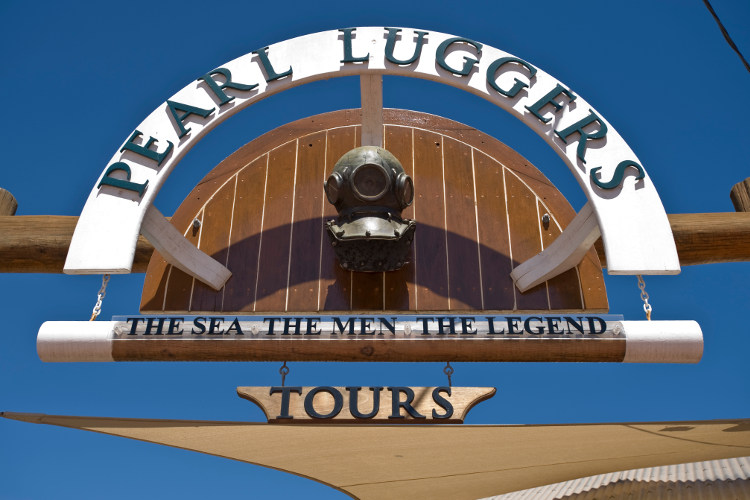
Confused by Broome’s pastiche of history, culture and characters? Go no further than the Broome Museum, in the stunning building of the former Customs House. This small and quirky collection of local pieces helps put Broome’s history into perspective – from its pearling past and present to recordings of Broome’s switchboard operators whose delightful recollections tell you all about Broome and its gossip in the ’60s and ’70s.
For the most entertaining interpretations, ‘walk the talk’ with Broome’s local raconteurs:
Wil Thomas of Broome Historical Walking Tours (visitbroome.com.au) provides an evocative town history, starting with the WWII bombing and heading back in time to pearling in the late 1800s.
Robert Dann of Grass Root Tours gives wonderful and moving accounts of Broome through a local Indigenous perspective.
Ed Bennett of Instyle Adventures (instyleadventures.com.au) offers half-day tours taking in Chinatown, Old Broome and Town Beach.